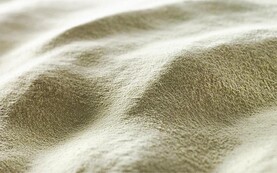Winter housing: While the weather has been tremendous for the past 10 days, with growth rates well up on normal and exceptionally good utilisation, the forecast is not good for next week, so housing will begin in earnest. These weeks are crucial for grass management and with the good growth rates, there’s potential to make money by grazing an extra paddock or two. See Grass+ pages 44 and 45.
Doses, dry cow tubes, teat sealer, dry cow minerals and vaccines needed over the winter should be bought now. By bundling all these together and pricing around, you should be in a position to get better value for money than buying them individually, or buying them locally as you need them. When comparing prices between suppliers, make sure you are comparing like with like. On dry cow tubes, choose the product you need for your herd. I see some of the milk processors are offering sensitivity tests to see what antibiotic will work best. While worthwhile, if there’s an ongoing problem, for farmers with good SCC levels I’d say stick to the product that is tried and tested.
On pre-calving minerals, you need to see the label to know what you’re getting. On page 8 of this week’s Focus, there is a detailed article on what to look for when buying a mineral but the key ingredients that can influence price are phosphorus and magnesium levels. Some of the cheaper minerals, and some licks/boluses don’t have any phosphorus included. Cows should be getting 3g to 4g of phosphorus per day through the mineral, but more may be required in cases of deficiency. Ideally, blood samples from a portion of the herd along with silage samples should be analysed for mineral status and a dry cow mineral formulated to suit the specific requirements.
If testing silage, do it properly, using a silage core. At least five or six cores should be taken and bulked together for each pit. Samples should be taken in an ‘‘X’’ shape on top of the pit. Taking a sample across the face of a pit is not as good a technique, but if this is the only way to do it, take samples in a ‘‘W’’ shape, working across the pit face.
Milk Price: There have been further falls in the GDT price auction this week and many farmers will be getting edgy about the price outlook for spring, as the price recovery seems to be slower than many would like. Over the next two months, attention will turn to filling out the 2015 profit monitors. In many cases, the average price for 2015 will not be as bad as first predicted as prices held firm for most of the high milk months. Every farmer should do a profit monitor. All discussion groups should make it a requirement for membership. It sets a benchmark for costs in the group and allows for forward planning. Now is the time for facilitators and group chairs to be planning the financial meeting at the end of the year. Use 2015 as a guide, but steer the meeting towards planning for 2016, focusing on where costs can be cut, learning from those with low costs and identifying where more output can be generated.






 This is a subscriber-only article
This is a subscriber-only article










SHARING OPTIONS: